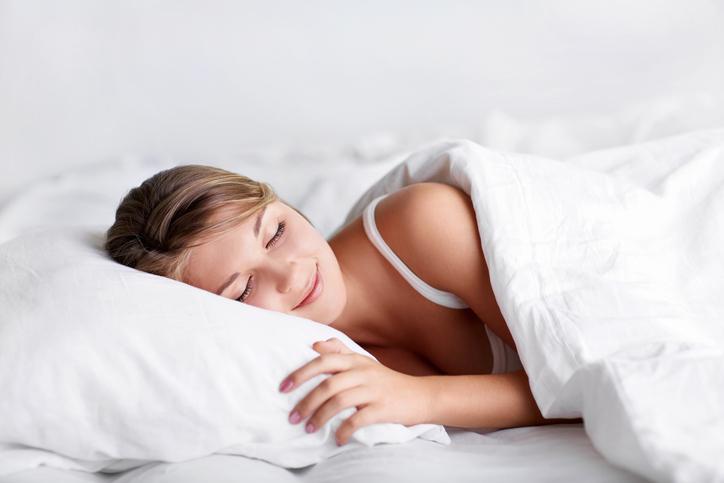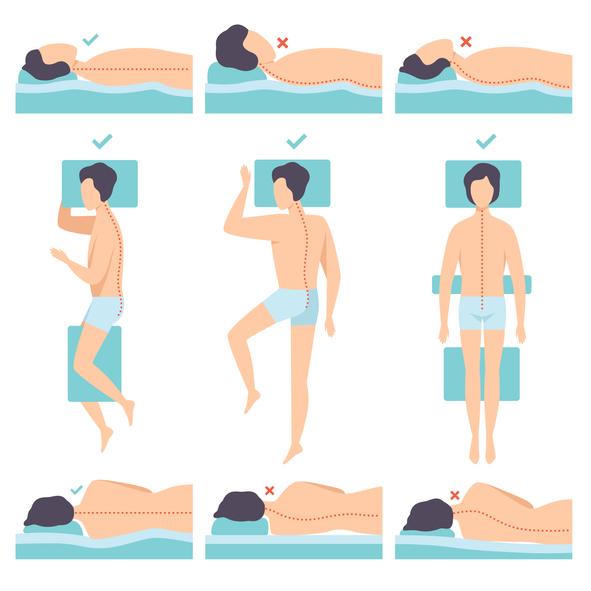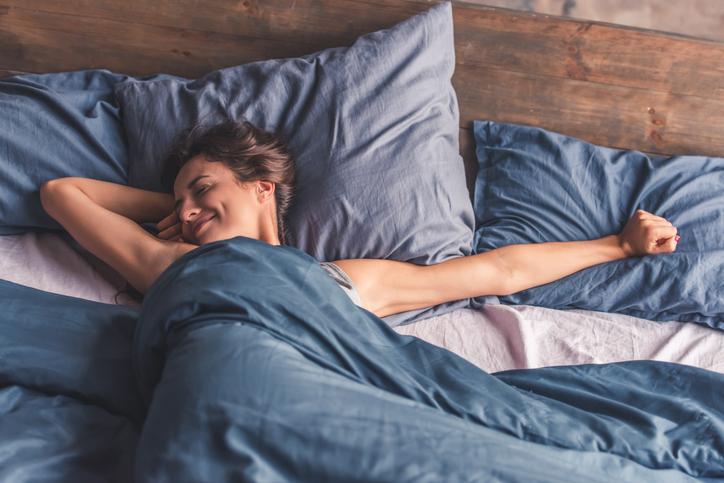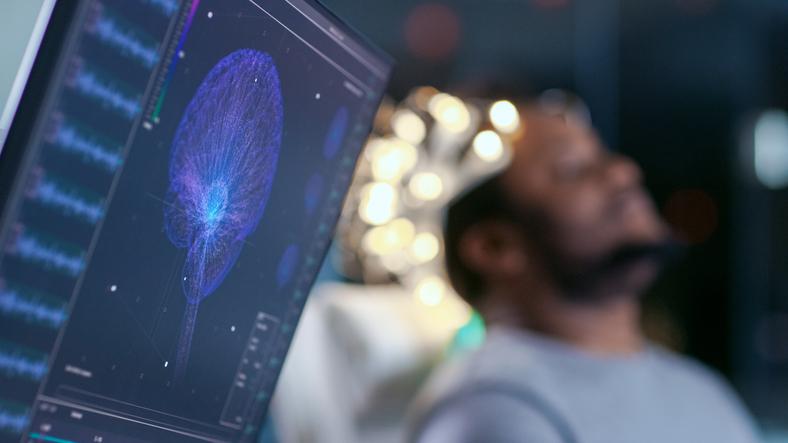Pillow talk - with wearable tech
istock-158416304.jpg
 Credit:Getty Images under licence to PhysioQinetics Ltd.
Credit:Getty Images under licence to PhysioQinetics Ltd.
The benefits of good pillows go beyond neck pain
Our physiotherapists get asked about what type of pillow is best for neck pain all the time - so often that we think maybe we should start making our own PQ branded pillows!
The importance of pillow on neck pain from cervical spondylosis and associated cervicogenic headache is well recognised. A recent study compared the effectiveness of one of the ergonomic "spring pillow" versus education alone on nonspecific neck pain using a 4-week treatment, 4-week washout, and 4 week cross-over design [1]. The authors found that compared to education alone, "spring pillow" appeared to be significantly more effective in reducing neck pain, thoracic pain, and headache but no such effect was seen with shoulder pain. Another recent study compared physiotherapy alone versus physiotherapy with additional use of ergonomic latex pillows as part of a multimodal intervention programme in cervical spondylosis [2]. The researchers found that after 4 weeks of intervention, the experimental group who received standard physiotherapy, and slept on ergonomic latex pillows as opposed to their own pillows, showed significantly better pain relief, decreased disability score, and improved range of movement in all directions.
Finding the right pillow for you
Having recognised the importance of pillow, how do we then go about finding the best pillow in town? In honest truth, we almost always told our patients the brand of pillow is irrelevant; but it really depends what type of sleeper you are:- whether you tend to sleep on your side (side-sleepers), on your back (back-sleepers), or on your front (front-sleepers).

Credit:
Getty Images under licence to PhysioQinetics Ltd.

So you are a "side-sleeper"...
If you sleep on your side for the majority of the night then it may help to use two pillows to enable your head /neck to be in the middle position. The pillow size (fullness) will depend on the width of your shoulders. If you have very wide shoulders then you may need two relatively full pillows and if you have smaller width shoulders then two thinner pillows will suffice.
...or are you a "back-sleeper"?
If you sleep mostly on your back then we would recommend that you just use the one pillow, for your head and neck to be in neutral alignment. It is preferable to choose a medium/firm pillow to give some support to the head and neck to stop sinking into the pillow. It does not necessarily have to be a memory foam pillow, and in fact sometimes these can actually be too hard and lead to more neck pain. Memory foam work for some people but can make things worst for others. The softness/firmness that you choose will depend on what is comfortable for you and what the amount that is required to keep your head/neck in as neutral position as possible.
What if you are a "front-sleeper"?
We recommend that you do not sleep on your front as this leads to the neck being rotated and extended and puts strain onto the joints and tissues. If this cannot be avoided then to use a pillow under your chest area so that the extended neck position is minimised.

Wait - how do I know my sleeping position... when I am asleep?
Excellent question! This is precisely where wearable technology comes in. Yours truly proposed one of the first "smart pillows" back in 1999-2000 when I was a medical student in University of Cambridge. I joined force with two good friends - another medical student, and an engineering student - and went right to the final at the Cambridge entrepreneur competition - we lost at the end...but in hindsight not because of lack of innovation but because of the lack of a suitable technology platform at the time. We were at least 7 years ahead of the most powerful and versatile platform (iPhone first generation came out in 2007) came on the scene! A quick browse on iTune app store today will reveal a plethora of apps that will allow you to monitor every facet of your physical (and psychological!) health. Popular app like SomnoPose by Proximal Box Software allows the users to monitor and record their sleeping position using the built-in accelerometer sensor from their smartphone. Combined with other sleep app like the SnoreLab by Reviva Softworks Ltd, we actually more or less have a functional portable sleep lab to monitor sleep quality particular in patients with obstructive sleep apnoea (OSA).
We already knew from the literature that sleeping position has a profound impact on the apnoea-hypopnoea index and oxygen desaturation index in patients with OSA [3]. Sleeping position also has a profound effect on the severity of diseased breathing pattern in heart failure patients with different sleep disorders (obstructive vs central sleep apnoea) [4]. A recent study showed some early promising preliminary validation on how dedicated smartphone / wearable sleep tracker and actigraphy may help to monitor sleep in patients with OSA [5]. The study showed that whilst these dedicated apps can provide a fair estimation of the total in bed time and light sleep, they provided very poor interclass correlation.

Credit:
Getty Images under licence to PhysioQinetics Ltd.

Evolution of wearable technology
One important thought on this - it may be true, for now, that an isolated device or apps may only provide sleep data with partial accuracy comparing to the conventional polysomnography; but the power of these devices lies in the ability to monitor MULTIPLE simultaneous parameters like in a real sleep lab - from sleeping position, and snoring data, to movement detection and oximetry data (with additional bluetooth adaptation), and the whole spectrum of data can then be sent to the cloud for AI machine learning! We now live in the era of the big data and machine learning is soon to lead us into data pattern recognition beyond our scientific imagination. This is one area that we are confident wearable technology will rapidly advance and transform the management of patients with sleep disorder such as sleep apnoea.
Don't ever underestimate the power of high level realtime computation - the photographers amongst us once swear that a smartphone's small sensor and small aperture will never come close in producing nice professional portraiture compared to our nice professional "fast" lens (my personal favourite is still my beloved Canon 50mm f/1.2L) costing upwards of £1,000; but the recent iterations of smartphone almost defies optical physics in producing nice creamy blurred background (bokeh) using realtime computation power of the smartphone CPU that unless you are a seasoned professional photographer you may struggle to differentiate from portrait photos taken using real photography gear...
Finally - back to our pillow talk
Don't waste time reading reviews online about the different pillows as the same pillow will not work for all. You really just need to go out to the shop, have a feel of the pillow and try it, keeping in mind the use of the pillow is to keep the head and neck as neutral as possible in relation to the shoulders without compromising on your own comfort!
Reference
1. Vanti C, Banchelli F, Marino C, et al. Effectiveness of a "sping pillow" versus education in chronic nonspecific neck pain: a randomised controlled trial. Phys Ther 2019 Apr 2 pii: pzz056. doi: 10.1093/ptj/pzz056
2. Fazli F, Farhmand B, Azadinia F. et al. Ergonomic latex pillows as a part of a multimodal intervention or as an adjunct to rehabilitation programme in cervical spondylosis: is it useful? A randomised controlled trial. Am J Phys Med Rehabil 2019 Feb 7 doi: 10.1097/PHM.0000000000001157
3. Bidarian-Moniri A, Nilsson M, Attia Jm et al. Mattress and pillow for prone positioning for treatment of obstructive sleep apnoea. Acta Otolaryngol. 2015 Mar; 135(3):271-6 doi: 10.3109/00016489.2014.968674
4. Pinna GD, Robbi E, La Rovere MT, et al. Differential impact of body position on the severity of disordered breathing in heart failure patients with obstructive vs central sleep apnoea. Eur J Heart Fail. 2015 Dec;17(12):1302-9. doi: 10.1002/ejhf.410
5. Gruwez A, Bruyneel AV, Bruyneel M. The validity of two commercially-available sleep trackers and actigraphy for assessment of sleep parameters in obstructive sleep apnoea patients. PLOS One 2019 Jan 9;14(1):e0210569 doi: 10.1371/journal.pone.0210569